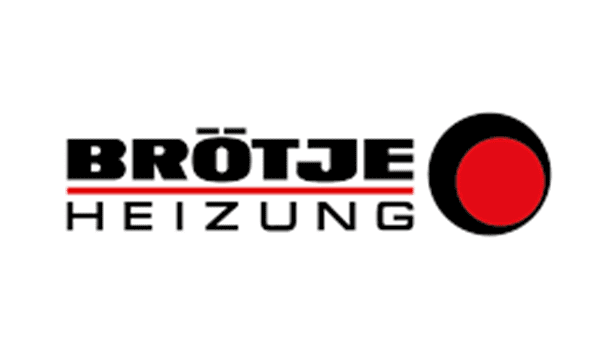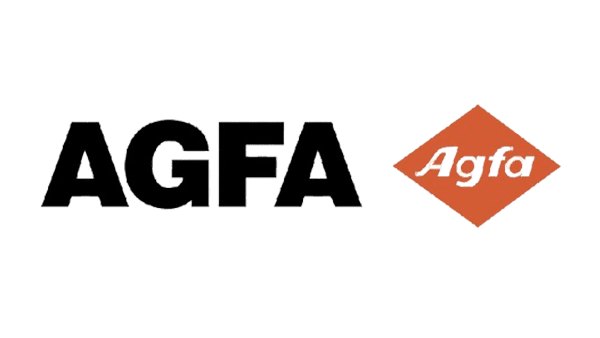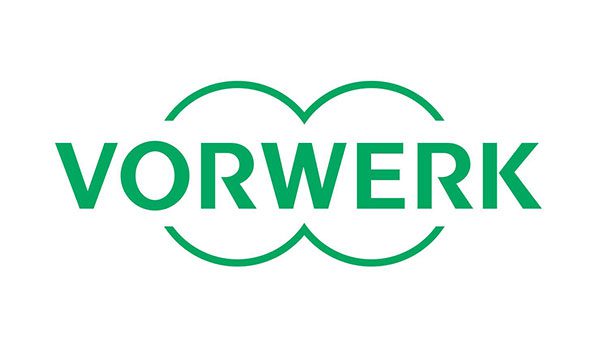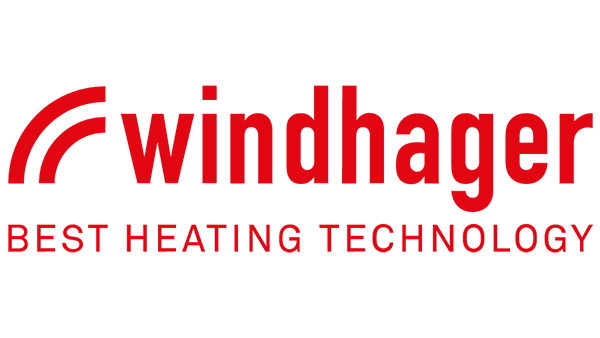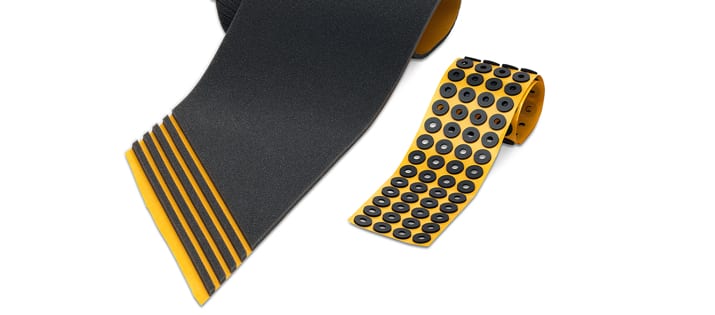
Enbi’s rotary die-cut products are precision-engineered to optimize energy efficiency and noise reduction in both industrial and consumer equipment. Utilizing advanced cutting techniques, these products are crafted from a variety of flexible insulation materials, effectively reducing energy losses and noise pollution. Each component is customized to integrate seamlessly with specific applications, enhancing overall system performance and sustainability.
In an era where noise and vibration have become significant urban challenges, Enbi stands out with its tailored rotary die-cut solutions. These products offer enhanced acoustic comfort and vibration control, crafted with precision to mitigate noise and vibrations effectively. The adaptability and efficiency of Enbi’s rotary die-cut products make them an essential choice for those looking to combine energy efficiency, noise reduction, and tailored design in their equipment.
What is Rotary Die Cutting?
Rotary die cutting is a versatile and efficient process used in various industries for precision cutting of materials. The method involves using a rotating cylindrical die, also known as a magnetic cylinder or anvil cylinder, equipped with sharp blades to cut through different materials. This process is ideal for cutting through various materials, including flexible and thicker materials, such as adhesive tapes, papers, corrugated packaging, and even abrasive materials.
Rotary die cutting offers a cost-effective solution for various applications and allows for tight tolerances and precise cutting. With the ability to handle various materials, the manufacturing and investment costs associated with rotary die cutting are reduced. This efficient process ensures high-quality finished products, with fast turnaround times and precise tolerances, making it a preferred piece of equipment in industries such as health care, packaging, and printing.
Advantages and Benefits
Rotary die cutting offers several advantages and benefits compared to flatbed die cutting. The primary advantage is its faster production rate. Rotary die cutters can process more sheets per hour, making them ideal for high-volume production. This not only increases efficiency but also reduces manufacturing costs.
Rotary die cutting is widely used in various industries and caters to various applications. The food and beverage industry benefits from rotary die cutting for packaging solutions, while the games industry utilizes it for creating game boards and pieces. Greeting cards can be intricately cut using rotary die-cutting techniques, enhancing their visual appeal. Moreover, rotary die cutting is integral to the healthcare sector for precision cutting of medical products.
Rotary die cutting provides a faster production rate and lower setup times than flatbed die cutting. Its versatility and ability to handle various materials make it suitable for food and beverage, games, greeting cards, and healthcare industries. Implementing rotary die-cutting technology can increase efficiency cost savings, and improve product quality.
Types of Rotary Die Cutters
Rotary die cutters come in various types and configurations to meet different cutting needs. One popular type is the magnetic cylinder rotary die cutter, which uses a magnetic cylinder to hold the die during the cutting process. This type of die cutter is ideal for flexible materials and offers tighter tolerances for precision cutting. Another type is the steel rule rotary die cutter, which uses a steel rule die to cut thicker materials. This type of die cutter is easily cost-effective and can handle various materials. Additionally, automatic rotary die cutters offer faster production rates and reduced setup time. These machines have servo motors for precise cutting and can handle various applications. Overall, the variety of rotary die cutters available in the market ensures that businesses can find the right equipment to suit their needs.
Magnetic Cylinders
Different types of magnetic cylinders used in rotary die cutting offer various features and advantages. One such type is the AccuBase™ Magnetic Cylinder, designed to optimize die accuracy. It ensures precise and consistent die-cutting results, making it ideal for applications that require high precision.
Another type is the Dual Magnetic setup, widely used in carton and packaging production. This setup includes two magnetic cylinders that work together to provide enhanced stability and control during die-cutting. It is highly efficient and capable of handling thicker materials and various applications.
The Single Magnetic Configuration is another type of magnetic cylinder that offers versatility and flexibility. It is suitable for die-cutting various flat products, allowing quick and easy changeovers. This configuration enables users to work with different materials, making it cost-effective and efficient.
These magnetic cylinders can be used for various applications, such as embossing, debossing, perforating, hole punching, and cut scoring. Their strong magnetic properties ensure precise and consistent cutting, even on challenging materials. With their superior die accuracy and tight tolerances, these magnetic cylinders guarantee high-quality finished products.
Steel Rule Dies
Steel rule dies play a crucial role in rotary die cutting, as they determine the shape and precision of the final product. Different types of steel rule die are available, each with its characteristics and applications.
The first type is a standard steel rule die, commonly used for general-purpose die cutting. It consists of a solid steel base, onto which steel rule blades are inserted and secured. Standard steel rule dies are versatile and can cut various materials, such as paper, cardboard, foam, and plastic.
Precision-ground steel rule dies are preferred for more complex shapes and intricate designs. These dies feature finely honed blade edges, allowing for superior precision cutting. They are commonly used for automotive, electronics, and medical applications, requiring tight tolerances and intricate details.
Another type is a steel rule die with hardened rule blades. These blades are manufactured with a higher hardness level, which provides increased durability and longevity. This type of steel rule die is ideal for cutting abrasive materials or high-volume production environments.
When choosing the right steel rule die, manufacturers and machine shops must consider the cut material, the required specifications, and the production volume. Cost, durability, and lead times must also be considered.
In summary, the different types of steel rule dies used in rotary die cutting include standard steel rule dies, precision-ground steel rule dies, and steel rule dies with hardened rule blades. Each type has its specific uses and applications, and the choice depends on the material being cut, the required specifications, and the production volume. Manufacturers and machine shops must carefully consider cost, durability, and lead times when selecting the appropriate steel rule dies for their operations.
Anvil Cylinders
Anvil Cylinders play a crucial role in the process of rotary die cutting. These cylindrical components are integral to the die-cutting machine, providing the necessary support and pressure against the cutting die.
Several types of Anvil Cylinders are available, each designed for specific applications. Solid Anvil Cylinders are commonly used for general-purpose rotary die cutting, offering excellent support and stability for cutting a wide range of materials. On the other hand, Automatic Anvil Cylinders are designed for high-speed production environments, allowing for faster setup times and increased productivity. Cylindrical Anvil Cylinders are designed to handle thicker and more rigid materials, providing reliable support for efficient die-cutting.
Using Anvil Cylinders in the die-cutting process brings several benefits and advantages. They ensure consistent pressure distribution, resulting in clean and precise cuts. Anvil Cylinders also contribute to faster production rates and improved turnaround times, enhancing overall efficiency. Additionally, they allow for tighter tolerances and more accurate cutting, ensuring high-quality finished products. With their versatility and reliability, Anvil Cylinders are an essential piece of rotary die-cutting industry equipment.
Production Capacity of Rotary Die Cutters
Production capacity refers to a machine’s maximum output or efficiency in a given period. Several factors can influence their production capacity in the case of rotary die cutters.
Firstly, the machine’s configuration and settings play a crucial role. Different machines may have varying designs and features affecting their speed, precision, and efficiency. For example, machines equipped with servo motors can offer faster and more precise cutting than those without.
The type of material being cut also impacts production capacity. Rotary die cutters are versatile and can handle various materials, including flexible and thicker materials. However, certain materials may require specific machine settings or adjustments to achieve optimal results. Understanding the properties and characteristics of the material is essential to maximize production efficiency.
Furthermore, the type of rotary cutting die used can affect production capacity. Steel rule dies, for example, are commonly used for their versatility in cutting various materials. They can handle tighter tolerances and complex shapes efficiently. On the other hand, solid rotary and flexible rotary dies may offer higher production rates for specific applications.
In summary, the production capacity of rotary die cutters is influenced by machine configuration and settings, material properties, and the type of rotary cutting die used. Understanding and utilizing these factors effectively can help optimize production efficiency and output.
Get a Quotation
Tell us about your rotary die cutting requirements.
Download our insulation brochure

Find your local Enbi facility to enquire about our rotary die cutting services.

Urgent technical question? Contact our experienced engineers for advice.






